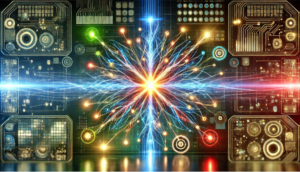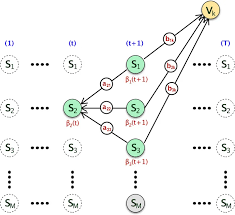A Brief History: Who Developed It?
The concept of the artificial neuron emerged in 1943 when Warren McCulloch and Walter Pitts introduced a mathematical model inspired by biological neurons. Frank Rosenblatt expanded this idea in the 1950s by developing the perceptron: a groundbreaking computational model for decision-making and learning.
What Is an Artificial Neuron?
Picture an artificial neuron as a decision engine. It takes inputs, weighs their significance, and generates an output based on a mathematical rule. This mechanism underpins neural networks, enabling them to solve complex data challenges and emulate human learning processes.

Why Are Artificial Neurons Used?
Artificial neurons address fundamental challenges in machine learning:
- Pattern Recognition: Detect intricate patterns in vast datasets.
- Streamlined Decision-Making: Simplify computational processes for faster results.
- Automation: Power AI systems for decision-making and predictive analysis.
These neurons form the foundation for advancements in AI technologies, such as image recognition and natural language processing.
How Are Artificial Neurons Used?
The process of using an artificial neuron involves:
- Feeding Inputs: Provide numerical or categorical data as input.
- Assigning Weights: Emphasise the importance of each input using adjustable weights.
- Computing a Weighted Sum: Combine the inputs with weights and apply an activation function.
- Generating Outputs: Use the result as input for subsequent layers in a neural network.
This iterative process creates robust models capable of solving complex tasks efficiently.
Different Types of Artificial Neurons
Artificial neurons come in several types, catering to different use cases:
- Perceptron: A single-layer neuron for binary classification tasks.
- Multilayer Perceptron (MLP): A complex model with multiple layers for deep learning applications.
- Recurrent Neurons: Adapt to sequential data, enabling applications such as speech recognition and language modelling.
Key Features of Artificial Neurons
Artificial neurons offer essential features that enhance their functionality:
- Weights and Biases: Adjust the importance of inputs and control thresholds.
- Activation Functions: Introduce non-linear capabilities to handle complex datasets.
Popular Software and Tools for Building Artificial Neurons
Building artificial neurons has been simplified with modern tools and frameworks:
- TensorFlow: A scalable framework for advanced neural network modelling.
- PyTorch: Renowned for its flexibility and intuitive design, ideal for research.
- Keras: Provides a user-friendly interface for quick neuron implementation.
- MATLAB: Offers specialised libraries for computational modelling and simulation.
Applications of Artificial Neurons in Australian Governmental Agencies
Artificial neurons are transforming various sectors in Australia:
- Healthcare:
- Application: Predict patient outcomes and improve disease detection capabilities.
- Traffic Management:
- Application: Analyse congestion data to optimise urban planning and reduce delays.
- Environmental Monitoring:
- Application: Process climate data to guide resource allocation and inform policy decisions.
Conclusion
Artificial neurons, inspired by biological systems, are the cornerstone of modern AI. Their ability to recognise patterns, streamline decision-making, and automate processes has revolutionised industries such as healthcare, transport, and environmental monitoring. With powerful tools like TensorFlow, PyTorch, and Keras, artificial neurons continue to drive advancements in data processing and predictive modelling.
How interested are you in uncovering even more about this topic? Our next article dives deeper into [insert next topic], unravelling insights you won’t want to miss. Stay curious and take the next step with us!








